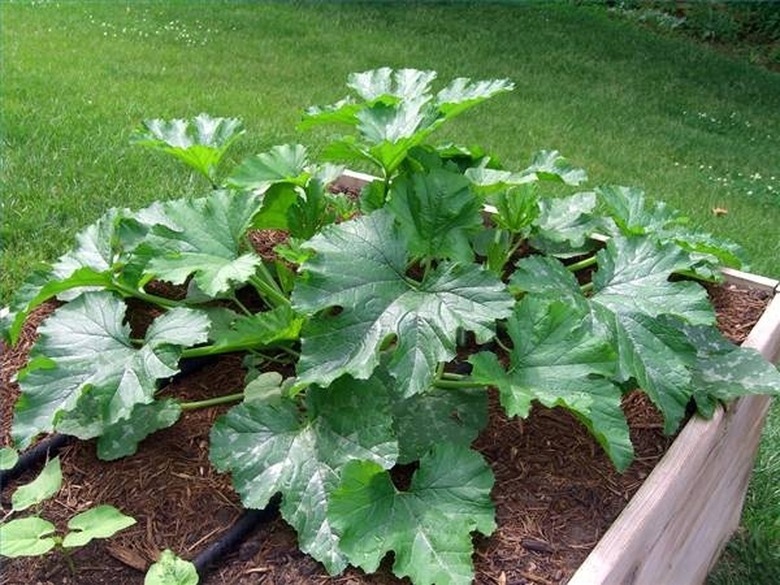How To Prune Zucchini
Zucchini (Cucurbita pepo) plants are vigorous growers capable of producing a bumper crop throughout summer. Although zucchini plants don't typically require much maintenance, there are three main reasons gardeners prune zucchini plants: to encourage the development of more flowers, to restrict intrusive growth and to slow the spread of powdery mildew. Your reason for pruning zucchini will determine which branches to remove.
All you need to prune zucchini is a sharp, clean pair of pruning shears. Consider wearing gloves and long sleeves if you are sensitive to the spines on zucchini stems and leaves.
Encouraging Additional Growth of Zucchini
Encouraging Additional Growth of Zucchini
Despite their reputation for prolific fruit production, zucchini plants sometimes underperform or bear absolutely no fruit at all. Pruning might fix the problem but it also might not. For example, fruit will almost never develop from the first set of flowers since these are male in all but a few zucchini varieties. In some rare instances, a zucchini plant will continue to produce only male flowers throughout the season.
Assuming your zucchini plant is mature and capable of producing female flowers, you can encourage additional blooms by pinching off the tip of the central stem if you're growing a vining type. This prompts the plant to produce side shoots, each of which will have nodes where flowers will grow. You don't need any special tool to prune zucchini this way; using your thumb and forefinger to snap the central bud is sufficient.
In addition, you can remove all leaves below the lowest zucchini fruit on the stem since new fruits will only develop up the stem. This conserves the plant's energy, keeps the garden tidy and promotes air circulation around the leaves. It's a win-win-win situation.
Restricting Intrusive Growth of Zucchini
Restricting Intrusive Growth of Zucchini
You might also want to prune a zucchini plant that is encroaching on other plants in your garden. A zucchini plant's large leaves and bushy habit mean it often overshadows neighboring plants, which can stunt their growth or even kill them. However, the leaves provide much-needed shade for its tender developing fruits, so it's important to carefully select which leaves to remove.
Start by removing leaves that look diseased or unhealthy. Then, remove the leaves with the longest stalks (also called petioles), which are typically attached to the main stem closest to the ground. If any remaining leaves continue to pose a problem to nearby crops, remove them too.
Whenever you remove a zucchini leaf, cut its stalk at the point just above where it meets the main stem. Take care not to remove any buds developing from the node at this junction.
Pruning Zucchini With Powdery Mildew
Pruning Zucchini With Powdery Mildew
Powdery mildew looks like a white dusting or powder on the leaves. At first, the zucchini plant may seem unaffected, but if enough leaves get covered with this mildew, the plant will be unable to perform photosynthesis and will die. Pruning zucchini with powdery mildew conserves the plant's energy and resources by removing useless leaves. Pruning also improves airflow, which makes the leaves too dry for the mildew to grow.
Remove any leaves that are already covered with powdery mildew. Discard the leaves in a yard waste bin or burn pile, not in a compost pile. Disinfect your shears before continuing.
Next, remove leaves growing under other zucchini leaves. These do not receive much sunlight as it is, and they're more likely to remain moist and susceptible to powdery mildew. Finally, remove any leaves that touch other zucchini plant leaves, preserving the topmost leaf. You should be left with a zucchini plant that gets plenty of air circulation around each of its leaves.
